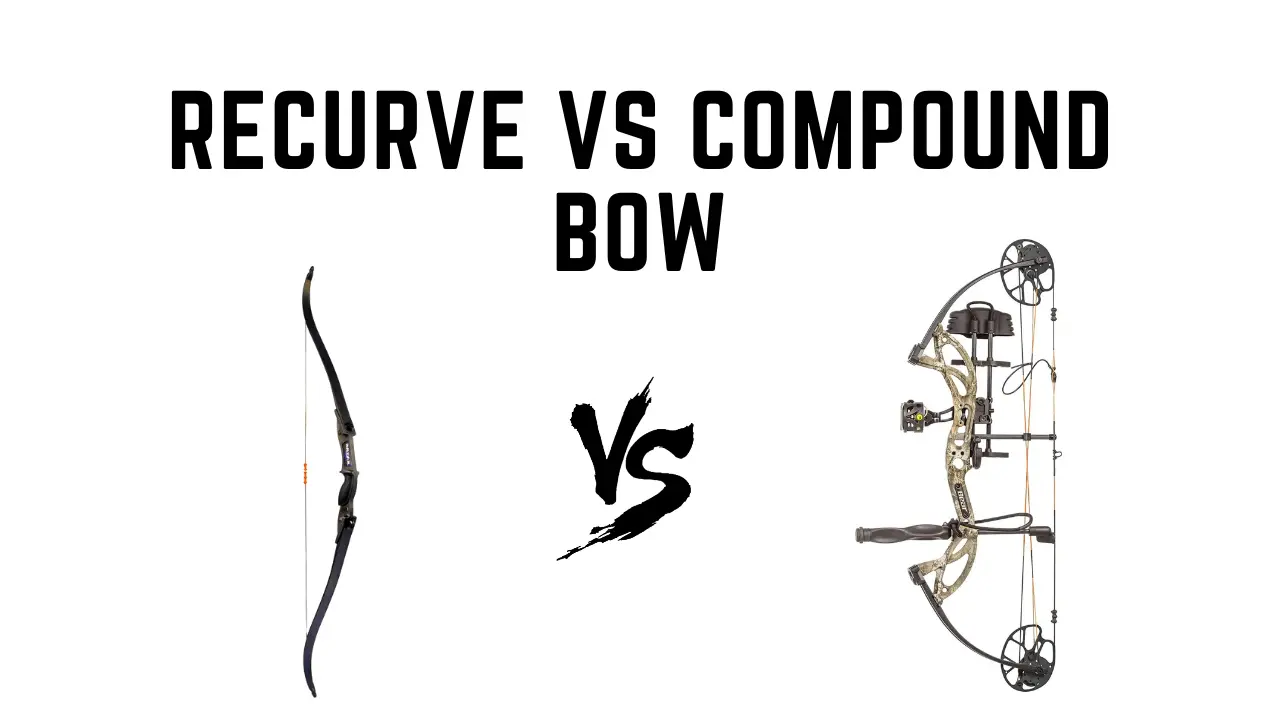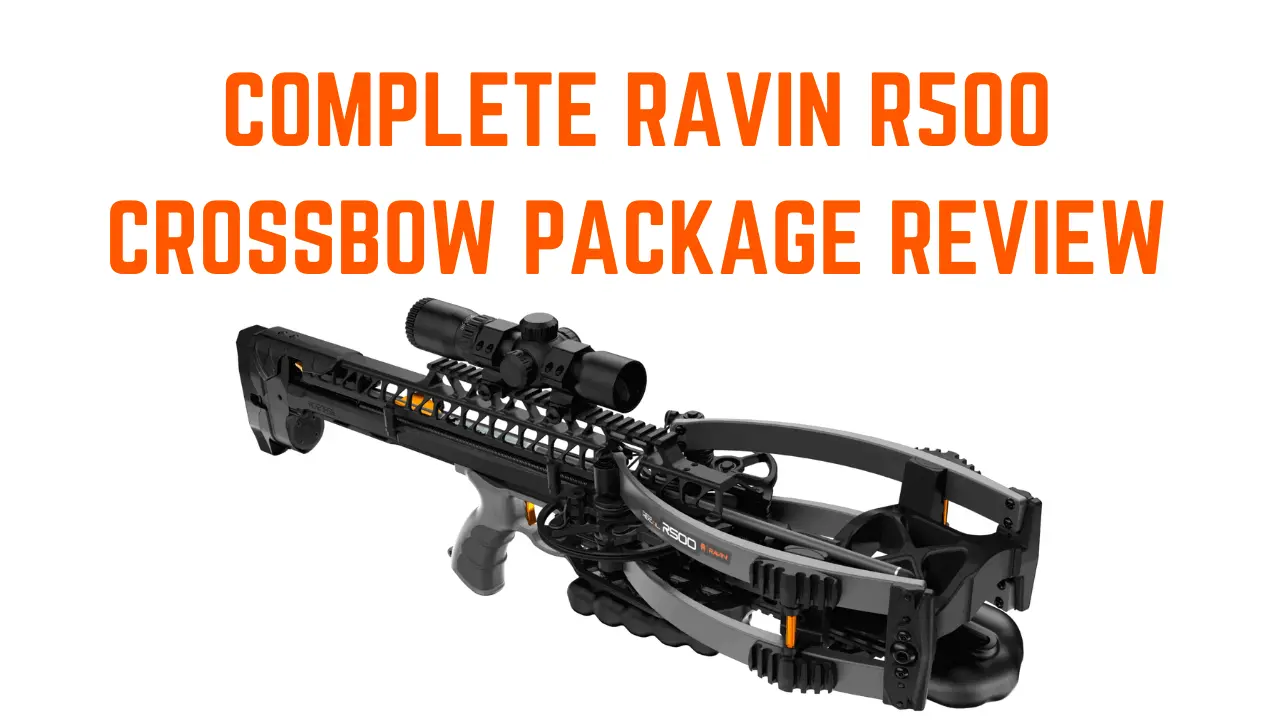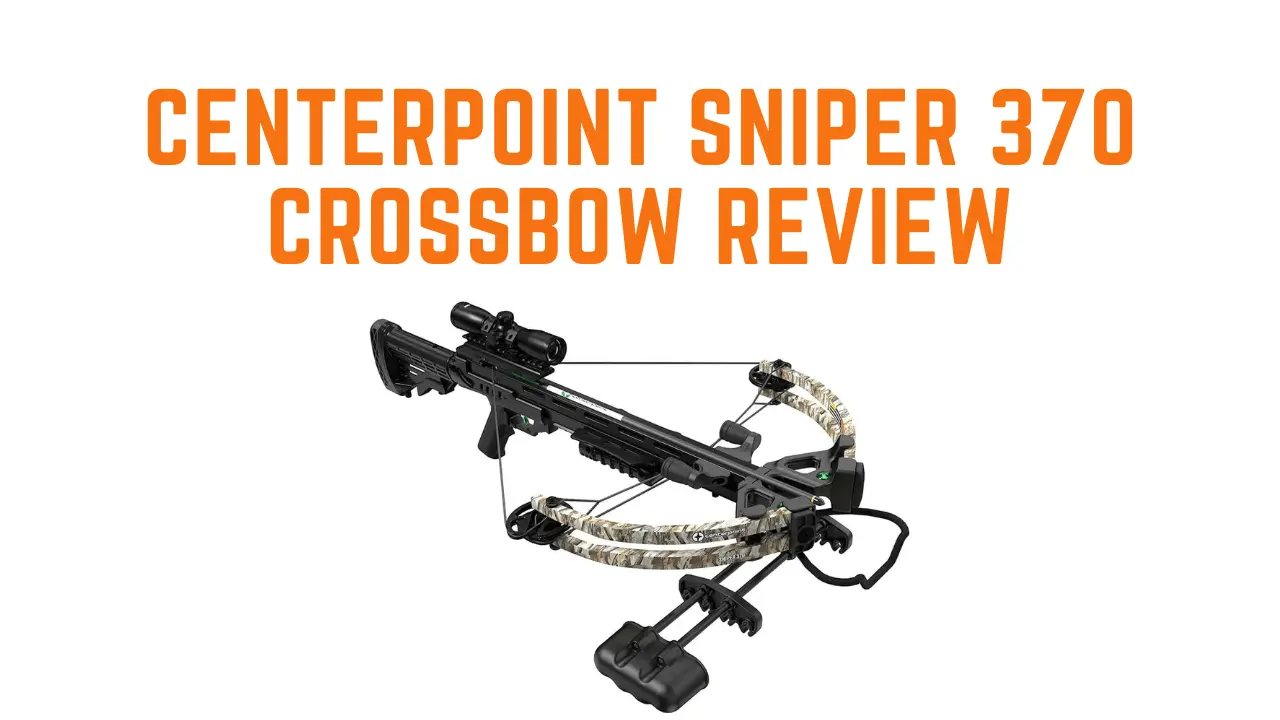Recurve vs Compound Bow – Which is Best and Why?
If you’re trying to decide between recurve vs compound bows, I understand how overwhelming it can be. As someone who’s been shooting bows for years, I know how important it is to choose the right type for your needs.
Compound bows are powerful, accurate, and customizable, making them a great option for hunting and target shooting. Recurve bows are simpler and offer a more traditional archery experience. Ultimately, the best type of bow depends on your preferences and intended use.
Let’s take a closer look at the features and benefits of the compound and recurve bows and how they can impact your performance. I’ll share my personal experiences and insights to help you confidently make an informed decision.
By the end of this article, you’ll have the knowledge you need to choose the perfect bow for you.
What Are Recurve Bows?
A recurve bow is a type of bow that has curved limbs that face away from the archer when unstrung. This design allows the bow to store more energy and deliver more power than a traditional longbow of the same length.
Recurve bows have been used for hunting, sport, and warfare for thousands of years. They were first developed by the ancient Eurasian nomads, such as the Huns and Mongols, who used them for hunting and fighting. The recurve design allowed them to shoot arrows with greater speed and accuracy.
Today, recurve bows are still used for hunting and sport. They are popular in archery competitions, including the Olympics, where athletes shoot arrows at targets from varying distances. Recurve bows are also used in field archery, which involves shooting arrows at targets set up in a natural environment, such as a forest.
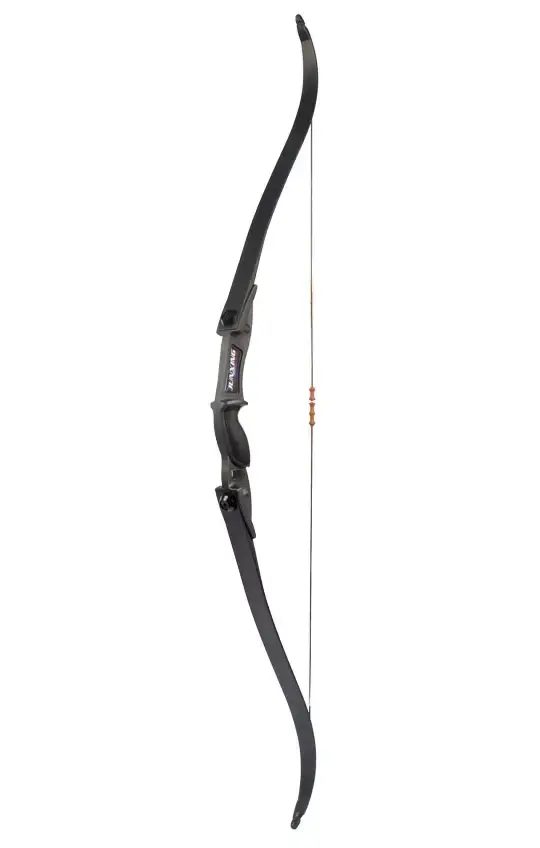
Recurve bows are typically made from wood, fiberglass, or carbon fiber. The limbs of the bow are curved away from the archer when unstrung, but they bend toward the archer when the bow is drawn.
Recurve bows come in various sizes and shapes, depending on their intended use. For example, a hunting recurve bow may be shorter and more compact than a competition recurves bow.
Recurve bows may also have different draw weights, which is the amount of force required to pull the bowstring back to its full draw length.
What Is A Compound Bow?
Compound bows are a type of advanced archery equipment that has become increasingly popular among hunters and target shooters due to many advantages over traditional bows. Unlike traditional bows, compound bows use a system of pulleys and cams to bend the limbs of the bow when the string is drawn.
This allows the archer to use a higher draw weight and hold the bowstring in a drawn position for longer periods of time.
One of the key benefits of using a compound bow is the concept of “let-off,” which means that the draw weight decreases when the bowstring is at or near full draw.
This allows the archer to aim more easily and reduces fatigue, making it possible to hold the bowstring in a drawn position for longer periods of time.
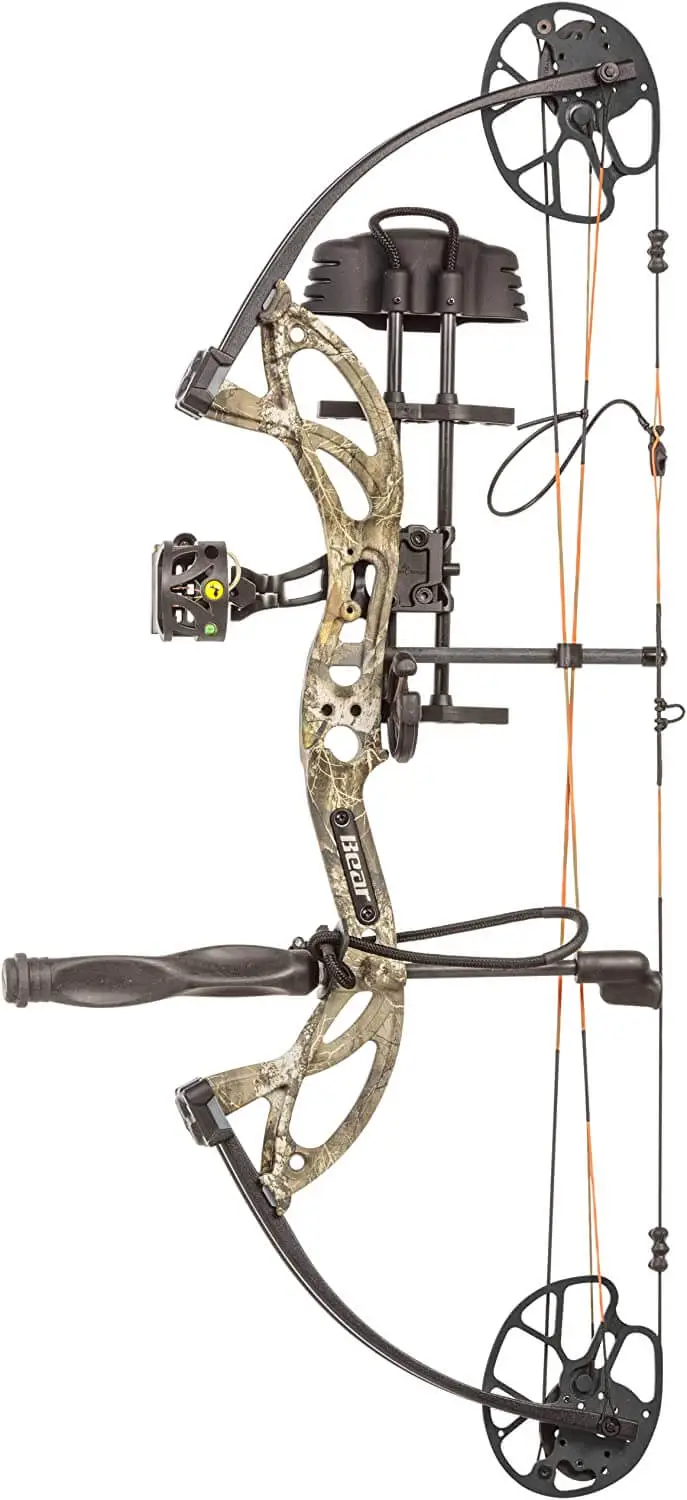
Additionally, the pulley and cam system used in compound bows makes them more energy-efficient than traditional bows, resulting in faster arrow speeds and greater accuracy over longer distances.
Despite their many advantages, compound bows also have some potential drawbacks. They have more moving parts than traditional bows, which means that they require more maintenance and can potentially fail.
Replacing a bowstring on a compound bow can also be more complicated than on a traditional bow and may require professional assistance.
When shopping for a compound bow, there are several important factors to consider. These include drawing weight, draw length, brace height, axle-to-axle length, and let-off percentage. It’s also important to consider the type of eccentric system, riser style, limb style, and price when making a purchasing decision.
Power
When it comes to power, the amount of kinetic energy a bow can deliver is determined by its draw weight and the speed at which it can shoot an arrow. In general, compound bows are capable of delivering more power than recurve bows.
One reason for this is the use of a pulley and cam system in compound bows. This system allows for a “let-off” in which the draw weight decreases as the bowstring reaches full draw, making it easier for the archer to hold the bowstring in position. This allows for higher draw weights and more power to be delivered to the arrow.
Recurve bows, on the other hand, do not have a let-off and rely solely on the strength of the archer to pull the bowstring back. While it’s possible to achieve high draw weights with a recurve bow, it requires a significant amount of strength and skill to do so.
Range
Recurve bows are generally capable of shooting arrows over 100 yards, but as the distance increases, the precision of the shot tends to drop. This is because the recurve bow relies on the archer’s skill and ability to maintain a consistent draw and release, which becomes more challenging at longer distances.
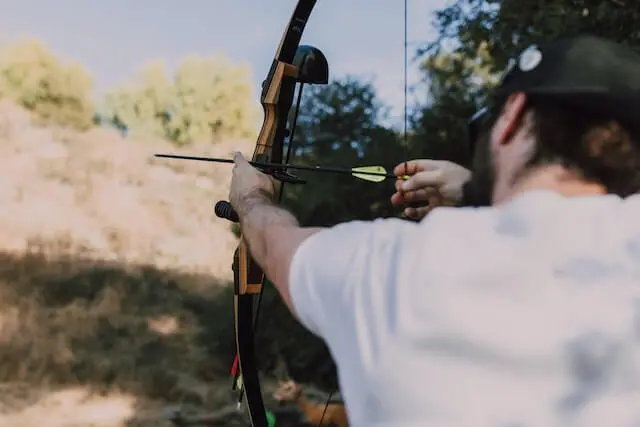
However, with practice and skill, an experienced archer can still achieve accurate shots at longer ranges. On the other hand, compound bows are known for their accuracy and speed at shorter ranges, typically around 70-100 yards.
The design of the compound bow includes a system of pulleys and cables that assist the archer in holding the bow at full draw, reducing the amount of physical exertion required to maintain the shot.
Shooting Speed
When it comes to shooting speed, the compound bow is faster than the traditional recurve bow due to its design and technology. The pulley system in a compound bow allows for more energy to be transferred to the arrow, resulting in faster arrow speeds.
On average, a modern compound bow can shoot arrows at speeds of over 300 feet per second, while a traditional recurve bow may shoot at speeds of around 170 to 180 feet per second.
However, it’s worth noting that faster arrow speed is not always necessary or desirable, and some traditional bows may outperform others in terms of speed.
Noise
When it comes to noise, both compound and recurve bows can produce sound when an arrow is shot. However, with proper tuning and the use of limb dampeners and string silencers, both types of bows can be made quieter.
Limb dampeners and string silencers are accessories that can be added to both compound and recurve bows to help reduce the noise generated during a shot. These accessories absorb vibrations and sounds, which helps to minimize noise.
To reduce the noise generated during a shot, it is essential to use an arrow that matches the power of the bow. A lighter or heavier arrow than what the bow is designed for can create excess noise.
Size
Size is another factor where the compound and recurve bows differ. In terms of physical dimensions, a compound bow that has the same power as a recurve bow is typically much smaller. For instance, a 70 lbs compound bow usually measures between 30-32 inches from limb tip to limb tip.
On the other hand, if you measure a recurve bow of the same power, you would be looking at a range of 60-64 inches from tip to tip. That means the recurve bow is almost twice the size of the compound bow.
The difference in size between these two types of bows can be attributed to their respective designs. The compound bow features a more complex system of pulleys and cams that allow for a shorter, more compact frame.
In contrast, the recurve bow has a simpler design with longer limbs that require more space to function effectively.
Weight
The compound bow is typically heavier than the recurve bow due to its more complex construction, which includes additional components to help increase its performance. In contrast, the recurve bow has a simpler design that allows for lighter weight without sacrificing its effectiveness.
Aiming, Shooting, and Accuracy
Compound bows have an edge in aiming due to their accessories, while recurve bows require instinctive aiming. When it comes to shooting, compound bows are often easier, but recurve bows require strength and consistency.

In terms of accuracy, compounds have an advantage, but recurves can still be precise with practice. Ultimately, both bows can be effective in the hands of a skilled archer.
Safety
A compound bow has its let-off feature. This allows the shooter to hold the bow at full draw with less physical strain, reducing the risk of fatigue and shaking, which can result in accidental releases.
Additionally, the use of mechanical release aids in compound bows and reduces the chance of the shooter’s fingers slipping and accidentally releasing the string.
Recurve bows, on the other hand, require a higher level of physical strength to hold at full draw, which can increase the risk of fatigue and shaking. This can lead to accidental releases and injury if the shooter is not careful. However, with proper form and technique, this risk can be reduced.
Cost
When it comes to cost, recurve bows tend to be more budget-friendly than compound bows. A recurve bow is usually half the price of a compound bow.
One reason for this cost difference is the complexity of the compound bow’s design. It has more moving parts, and its assembly and transport require more technical expertise. In contrast, recurve bows keep it simple and cost-effective with a straightforward design.
Portability – Size and Weight
Recurve bows are known for their portability, with takedown models being particularly convenient. These bows can be disassembled into three parts: the riser, top limb, and bottom limb, making them easy to transport and store. On the other hand, compound bows are typically built as a single unit, which makes them less portable.
Construction
Both recurve and compound bows are made from a variety of materials, such as aluminum, carbon, and laminated wood. Recurve bows have the option of having a laminated wood riser, while compound bows usually have an aluminum or carbon riser.
Both types of bows use similar wood laminations for their limbs. There is no clear winner when it comes to construction between recurve and compound bows.
Maintenance
Maintenance is a crucial factor when considering which bow to invest in. Recurve bows are much easier to maintain and repair compared to compound bows. In the event of a broken string or limb, recurve bows can be easily re-strung or fixed with replacement limbs that can be bolted on by the archer themselves.
Compound bows, on the other hand, are not designed to be disassembled and repaired by the archer and require the assistance of a professional at a pro shop.
Recurve vs Compound Bows for Hunting
Hunting with a recurve bow vs. a compound bow ultimately depends on your personal preferences and hunting style. Recurve bows are good for traditionalists and those who enjoy the simplicity of the sport.
Compound bows are good for those who want power and precision. We will discuss individual uses for each type and recommend the best option for each use.
What to choose?
When it comes to choosing between a recurve and compound bow, there is no one-size-fits-all answer. The choice is subjective and depends on the individual’s preferences, intended use, and skill level.
The main difference between a recurve and a compound bow is that the compound bow uses a system of pulleys and cables, while the recurve bow relies solely on the strength of the archer to pull and release the string.
For Beginners
As a beginner, starting with a recurve bow can be the best option. Recurve bows allow for easy adjustment by simply replacing the limbs rather than purchasing an entirely new bow like with a compound. Additionally, many introductory archery events use recurve bows. While compound bows offer more adjustability, the simplicity and cost-effectiveness of a recurve make it the best choice for beginners.
For Practicing on Targets

If you want to take your target shooting to an elite level, it’s important to note that the only bow allowed in the Olympic games is the recurve. While compounds can be used in other competitions, the highest level of target shooting still prefers the traditional recurve. So I prefer you to stick with the basics and go with recurve.
For Hunting
When it comes to hunting, I personally prefer using a compound bow. The let-off feature allows me to easily hold the bow at full draw for an extended period of time, which comes in handy when waiting for prey while hiding in a tree stand or in the woods.
Additionally, compounds are smaller in size and much easier to carry when fully assembled, making them a great choice for navigating through woodlands without getting snagged.
For Bowfishing
As someone with experience in bow fishing, I can say that both recurve and compound bows are suitable for this sport. In my opinion, the simplicity and lightweight design of a recurve bow make it a great option for bow fishing. When wading through shallow waters, I find it easier to maneuver and quickly aim with a recurve bow.
However, I know some bow fishers prefer the power and adjustability of a compound bow, especially when targeting larger fish or shooting from a boat.
Final words on Recurve vs Compound Bows
Whether you’re a seasoned archer or a beginner, the right bow can make all the difference in your performance and enjoyment of the sport. When deciding between a recurve vs. compound bow, it’s important to consider your individual shooting style, goals, and preferences.
With the right bow in your hands, you’ll be ready to take on new challenges, improve your skills, and experience the thrill of archery.

